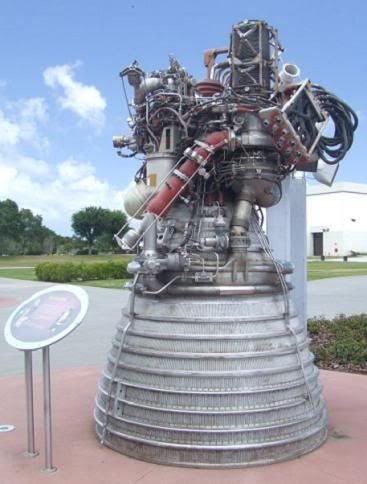Post by glactus on Jun 18, 2011 3:49:54 GMT
NASA is up to something. The J2 engine is being revised by Space Alliance for deep space missions. We can only speculate that this suburb power plant is being upgraded to the previously planned NOVA, a super rocket for missions to asteroids or for the conquest of Mars.

The J2 engine
The J-2 rocket engine was a major component of the Saturn V rocket used in the Apollo program to send men to the Moon. Five J-2 engines were used on the S-II second stage, and one J-2 was used on the S-IVB third stage. The S-IVB was also used as the second stage of the smaller Saturn IB rocket used to launch Apollo spacecraft into Earth orbit. There were proposals to use various numbers of J-2 engines in the upper stages of an even larger rocket, the planned Nova.

The 5 J2 engines on Saturn V
A unique characteristic of the J-2 engine (at the time) was its ability to re-start after shutdown. The J-2 engine on the S-IVB was intended to burn twice. The first burn, lasting for about two minutes, placed the Apollo spacecraft into earth orbit, and then shut down. After the crew members verified that the spacecraft was operating nominally, the J-2 was re-ignited for translunar injection. This 6.5 minute burn accelerated the Apollo spacecraft to a course for the Moon.

The Saturn V rocket
The J-2 was America's largest production liquid hydrogen fueled rocket engine before the Space Shuttle main engines (SSME), and a derivative was studied for use in Project Constellation, a cancelled NASA program to return to the Moon

Looking at the Moon
Credits: These are NASA/JPL images
Text by Wikipedia/Glactus
Telescope in avatar:Meade 16" LX 200
Astronomer in avatar: Glactus

The J2 engine
The J-2 rocket engine was a major component of the Saturn V rocket used in the Apollo program to send men to the Moon. Five J-2 engines were used on the S-II second stage, and one J-2 was used on the S-IVB third stage. The S-IVB was also used as the second stage of the smaller Saturn IB rocket used to launch Apollo spacecraft into Earth orbit. There were proposals to use various numbers of J-2 engines in the upper stages of an even larger rocket, the planned Nova.

The 5 J2 engines on Saturn V
A unique characteristic of the J-2 engine (at the time) was its ability to re-start after shutdown. The J-2 engine on the S-IVB was intended to burn twice. The first burn, lasting for about two minutes, placed the Apollo spacecraft into earth orbit, and then shut down. After the crew members verified that the spacecraft was operating nominally, the J-2 was re-ignited for translunar injection. This 6.5 minute burn accelerated the Apollo spacecraft to a course for the Moon.

The Saturn V rocket
The J-2 was America's largest production liquid hydrogen fueled rocket engine before the Space Shuttle main engines (SSME), and a derivative was studied for use in Project Constellation, a cancelled NASA program to return to the Moon
Looking at the Moon
Credits: These are NASA/JPL images
Text by Wikipedia/Glactus
Telescope in avatar:Meade 16" LX 200
Astronomer in avatar: Glactus


